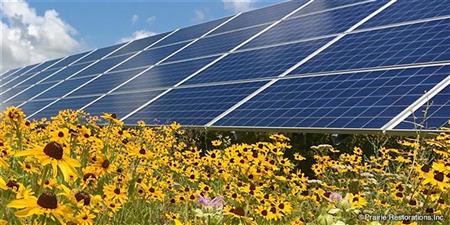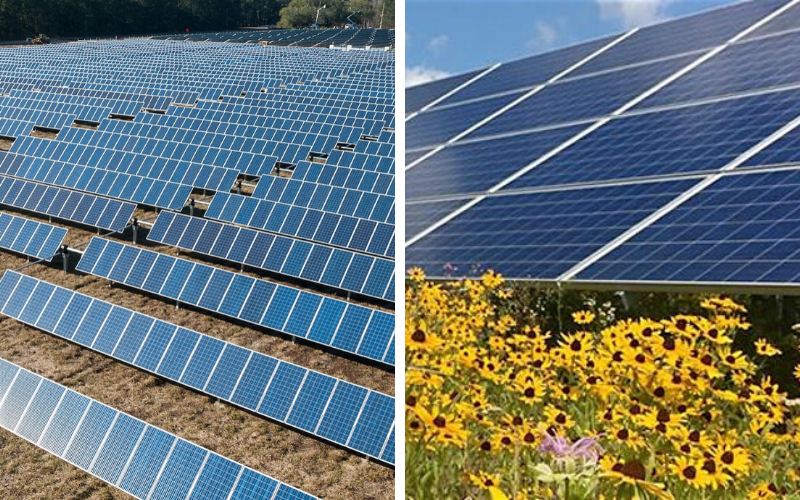
EcoEducation: Big Solar: Wildlife Sanctuaries or Industrial Blights?
Rob Davis, Director of the Center for Pollinators in Energy at Fresh Energy, showed the Rotary EcoClub how concerns over the less than eco-friendly outcomes from erecting big solar fields can be addressed by planting native pollinator supporting plants beneath the panels. We learned a lot about the ecological and the economic considerations and trade-offs when dedicating acreage to solar energy production.
Economics is one measure of the cost of how we produce our energy and the economic cost of solar energy production has plummeted from $76 per Watt in the 1970s to less than 40¢ per Watt in the late 2010s. There is some recent analysis that suggests that, when factoring in ongoing maintenance and operations costs, energy produced by solar and wind is now cheaper than energy produced by coal. We learned in our meeting that, for solar, it is currently large ground-based solar fields (in contrast to roof based systems or small irregularly shaped installations) that have this economic advantage.
In Minnesota, solar energy production is mandated by law. In 2013, the Minnesota Legislature mandated that by 2020 1.5% of electricity produced in the state comes from solar. The requirement also includes a mandate to increase that percentage to 25% by 2025. Large solar fields will have to be part of the energy producing solution. The thought of turning lush fertile land into a new kind of farm can actually be an environmental turn-off for many. In some areas of the country solar fields are placed on beds of crushed rock or on fields of grass and weeds. The look can be messy, industrial and almost "prison-like." It reduces habitat for pollinators and other insects and birds. There is a way, however, to construct these solar fields in a way that improves habitat and looks beautiful.
By planting low growing native flowering plants beneath and around the solar panels, what could be ecological deserts turn into thriving ecosystems. The native plants with their deeper root systems are better for the soil. The habitat for pollinators also creates habitat for other beneficial insects and for native birds. If these fields are in proximity to pollinator dependent crops, crop yield has been shown to increase 1-5%. If these fields are in proximity to crops like corn that do not depend on pollinators, the increase in beneficial insects can help production. Hunters have seen improved habitat for pheasants in the areas in proximity to solar fields. The presence of these plants also make the panels themselves work better by maintaining cooler temperatures beneath the arrays.
Rob shared further levels of the "benefit stack" that can come from pollinator habitat solar fields - some yummy products such as Solar Honey and Solar Beer. This calls for a future EcoFellowship event for sure!

